Egg Carton Measuring
Next we had a go at using egg cartons to form a non-standard unit of measurement. This is always a fun activity with young children as it takes the pressure off being able to read real numbers and introduces the concepts of measurement in a very kinaesthetic and practical way. It can also be extended in any way that you like to become an open-ended challenge for older children too.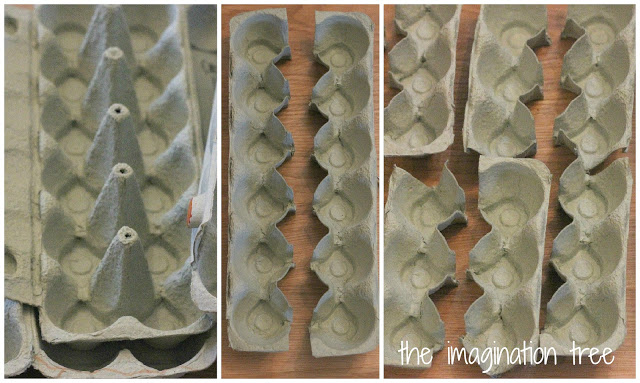
We had a lot of fun together finding the items to measure and seeing which was the biggest and smallest and which turned out to be identical lengths. We talked about making sure the Eggy boxes were layed carefully in a straight line next to each object and that they touched end to end. There were a couple of instances where the object was slightly too long or too short and so we had to think of a solution. We talked about creating a half sized unit of measurement “The Half Eggy”, and simply cut one box down to be just 1.5 holes long. This proved particularly useful for measuring the apple, as it turned out to be exactly one half Eggy long! And Cakie wanted to be measured too, as well as Pop, and was found to be 7.5 Eggys long, where Pop had been 7! Who knew they were so close in size? Their Mum certainly hadn’t realised!
Extend this activity:
- ask them to draw or write a list of their own chosen objects to measure
- can they find something that is 30 Eggys long? 50? More?
- find out how tall objects are, instead of how long, by using whole closed egg boxes and stacking with them (see this post where we did something similar)
See more egg carton ideas!
Egg Carton Colour Sorting
Egg Carton Counting and Sorting
Egg Carton Toddler Discovery Box
Egg Carton Printing
Enter your email address:
Delivered by FeedBurnerJoin us on The Imagination Tree facebook page for daily play ideas and conversation with the early years community!
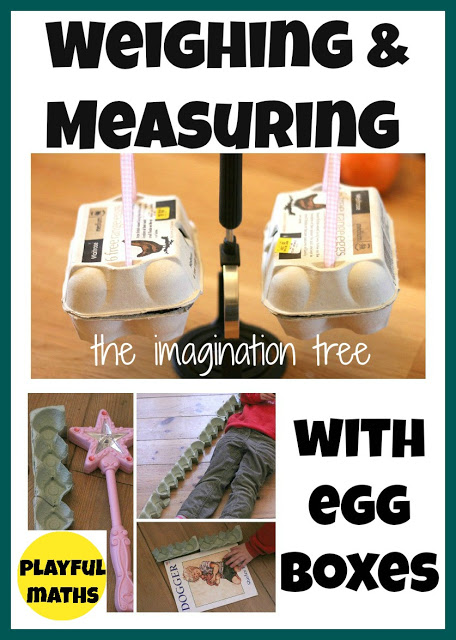
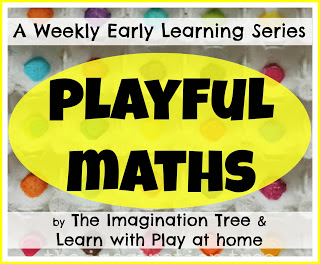
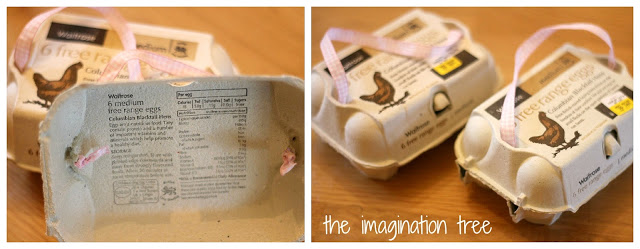

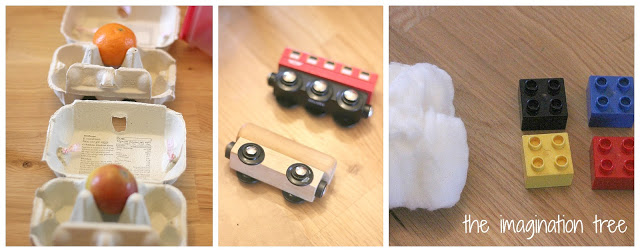
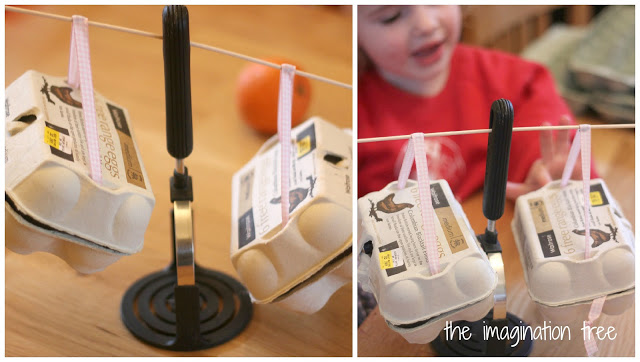
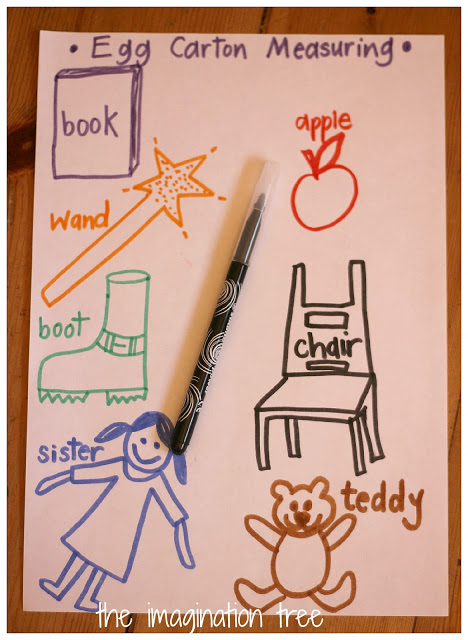
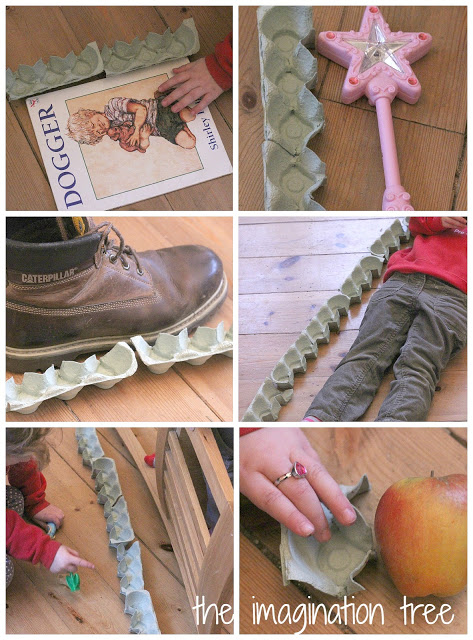
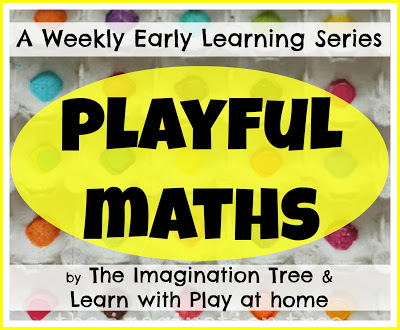
Outstanding idea! I love empty egg cartons. They can be reused in so many ways. Renee
thank you, as always Renee! x
This is going to be a great series! I love how you used the egg cartons!
Great idea!
I love your blog and have just given you a shout over on my blog Only Best For Baby in my latest post on Sensory Play.
I’ve also added the It’s Playtime button to my sidebar. Thank you for all of the amazing ideas for play with babies and toddlers.
Lydia x
Fabulous, it’s both fun and educational, my son would love the egg carton weighing scales he really likes figuring out stuff like this and it’s is a nice way to get a handle on basic physics. Great stuff, thanks for sharing!
I love this Anna, especially your scales!
We did measuring with DUPLO a while ago, but I might have to try again with egg cartons. xx
Such a lovely post. Red Ted will love this! He loves “experiments”. Will see if we can have a go tomorrow afternoon (after some crafting and some homework)
Maggy